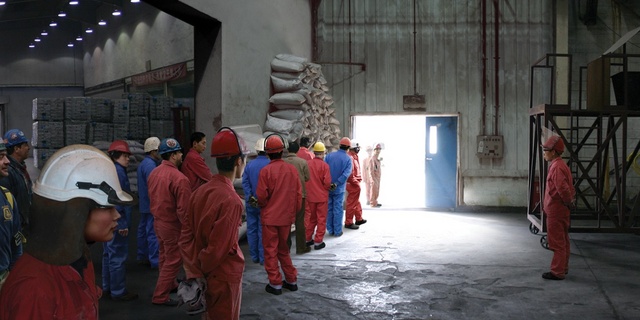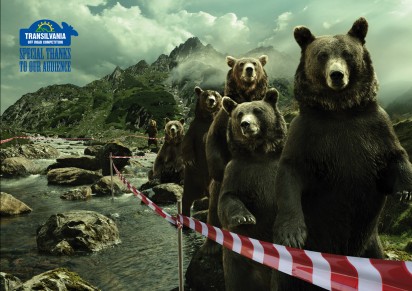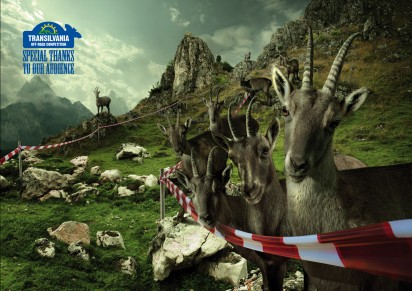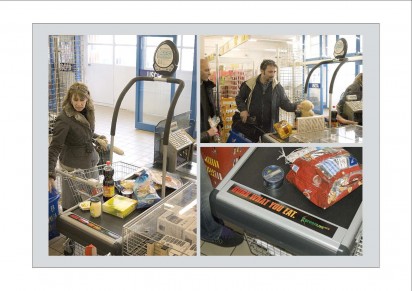Mobile firms unite to launch super agency
Posted in: UncategorizedLONDON – Three mobile agencies, including Mobile Dreams Factory, Clanmo and Sponge have joined forces to launch the Mobile One Alliance, to offer brands single, pan-European integrated campaigns.
Debenhams staff encouraged to tweet @work
Posted in: UncategorizedLONDON – Debenhams is to unleash its ‘Spectacular Twitter Experiment’ tomorrow, with retail staff brandishing smartphones to help answer customer queries through the microblogging website.
Hyundai CRM campaign sends chamois leather to customers to boost loyalty
Posted in: UncategorizedLONDON – Hyundai is using a new monthly direct mail campaign to boost brand loyalty.
EDF Energy joins with age charity for DM campaign
Posted in: UncategorizedLONDON – EDF Energy has unveiled a campaign highlighting the need for elderly people to stay warm in the coming winter, as part of the firm’s partnership with age positive charity, WRVS.
Battle of the brands: Amazon versus Play
Posted in: UncategorizedLONDON – How do two of the UK’s biggest e-commerce brands perform in online user experience? Revolution partnered with user experience consultancy Webcredible to assess the merits of Play.com and Amazon.co.uk.
Is Advertising Anti-Culture?
Posted in: UncategorizedAt a recent speaking engagement, David Simon, the creator of HBO’s “The Wire,” opined that advertising single-handedly wrecked the quality of television. The need to sell products put the onus on show creators to get more people watching, ultimately souring the art of television programming. This brings up an interesting philosophical question: is advertising really anti-culture?
As marketers and advertisers, our gut reaction is to protect our livelihoods and territories with a resounding, “No!” It’s often difficult to turn one’s gaze inward and scrutinize what we do. Yet, when magazines are filled with page after page of advertising that dwarfs content and TV shows are implicitly pushed to become formulaic simply to bring more eyes to the commercials, we might have to ask ourselves if advertising is a symbiotic part of culture or parasitic. I, for one, am not excited by digging through pages of ads just to find the article that caught my attention. I’m no fan of network TV, either, since too many of the shows are vapid retreads. So, I feel like there’s some merit to the idea that advertising has been the antithesis of culture.
This doesn’t mean that advertising has to go away, but perhaps it does need to change. With the power of the Internet and cheaper access to the tools needed to create and publish video and printed content, it may be only a matter of time before people leave TV behind for good. “Better” or “more original” programming online may draw people (and their commercial watching eyes) away from the boob tube. But the Internet provides a more pressing issue: its very size may cause audiences to spread out more and viewers may simply park themselves at the websites for their favorite shows.
Where am I going with all this? I think we can ask ourselves a question that is similar to my initial philosophical quandary but with a push towards action: Have we let ourselves become so bound to traditional methods that we aren’t doing enough searching for spectacular new ways to reach people?
Admittedly, I don’t have the answer to this one, but I think it’s a damn intriguing question.
Pedro Bonano has a background in Computer Science and Marketing, and has over 10 years experience working for small companies. Find me on LinkedIn.com.
Latino Creatives on the WWF Crisis: Bad Ad, Worse PR, Touchy Americans
Posted in: Uncategorized
Besides calling attention to scam ads and the reality that in a digital age local ads become global, the events of last week surrounding the WWF-9/11 ad have highlighted a tension between local creativity and international sensitivity. How will this impact Latin American creative culture? Will it mean that shops there, especially those owned by multinational conglomerates like Omnicom and WPP, pull back and become more timid?
Sydney International Food Festival
Posted in: UncategorizedUne idée très bien exécutée, avec ces drapeaux et symboles réalisés grâce aux aliments. Une belle manière de célébrer le festival international SIFF autour de la gastronomie. Par lagence WHYBIN/TBWA Sydney, sur des photographies de Natalie Boog. Plus d’images dans la suite.
Previously on Fubiz
Surf the toilet paper on stop motion
Posted in: UncategorizedA cool girl is riding toilet paper in this video… Advertiser: Protest grocery Shopping
Work Now at Z33 in Hasselt
Posted in: Uncategorized
Transylvania Off Road Competition: The Goats
Posted in: Uncategorized“Special thanks to our audience.”
Advertising Agency: McCann Erickson, Romania
Creative Director: Adrian Botan
Art Director: Razvan Chifu
Copywriter: Catalin Dobre
Photographer: Marius Samoila
Additional credits: Alex “Bud” Deaconu
Published: August 2009
Negative Space Illustrations
Posted in: UncategorizedDes illustrations minimalistes et à double sens, réalisées par le designer israélien Noma Bar après des publications dans The Guardian ou le New York Times. Elles exploitent l’espace négatif sur les sujets de la guerre ou de la religion. L’ensemble est extrait de son livre “Negative Space”.
Previously on Fubiz
Greenline Gym: Threadmill
Posted in: UncategorizedAdvertising Agency: JWT, Milan, Italy
Executive Creative Director: Pietro Maestri
Creative Director: Bruno Bertelli
Art Director: Marco Viganò
Copywriter: Michele Picci
Published: February 2009
Strong electrostatic shock on a kid
Posted in: UncategorizedIn this video the little boy get a huge electrostatic shock!!! Advertiser: Audi
Es Spukt
Posted in: Uncategorized
Westsport : Walking and Hiking Boots
Posted in: UncategorizedAgency: Publicis Communications, Mumbai, India
Executive Creative Directors: Prasanna Sankhe, Ashish Khazanchi
Creative Director: Kartik Smetacek
Art Director / Illustrator / Copywriter: Kudrat Pardiwala

Buddha Pears – Spiritual Fruit Shapes Made With Formed Plastic Casings (GALLERY)
Posted in: UncategorizedWorld Wildlife Fund Ad Sparks Anger, but Makes a Good Point
Posted in: Uncategorized This week, the ad community was put on display by an ad leaked out of DDB Brazil. The client, the World Wildlife Fund, was none too excited over this release (or was it?), and the pundits were salivating at the opportunity to rip this spot apart with their fake outrage.
This week, the ad community was put on display by an ad leaked out of DDB Brazil. The client, the World Wildlife Fund, was none too excited over this release (or was it?), and the pundits were salivating at the opportunity to rip this spot apart with their fake outrage.
The ad features a very moving truth and the media uproar displays a few ‘inconvenient truths’ about Americans. First, we seem to only care about ourselves. Second, we can’t stomach a brutally honest message. If three people die in a shooting in the US, we talk about it nonstop for months, but if 100 people die in a mudslide in Taiwan, we barely bat an eyelash. This spot tells a great truth about the power of mother nature and is effective in portraying it. It has made me think about mother nature more than anything since Hurricane Katrina, in part because I, too, am a silly American who tends to think only about American lives.
We’ve become distanced from reality. When the ad community attempts to make a hard-hitting PSA to curtail drinking/texting while driving, drug use, or to impress upon people the awesome power of mother nature, we’re forced to go soft for the sake of the populace. Why are we such wimps? The events of September 11, 2001 were horrific, and I don’t see how this spot is, in any way, attempting to make our tragedy seem like anything less.
This creative concept is brilliant. It is so simple, so logical, and so impressively gut wrenching. More people should take a moment to get past the fake outrage and digest the information being presented. Still, the point of the campaign was to create awareness of the awesome power this planet has over us, but I think it accomplished that and then some. This might just be the most efficient use of a client’s money this year.
Pete Kahn is a Product Insights Specialist, blogger and aspiring writer. Feel free to leave a comment, follow Pete on Twitter, or view his profile on LinkedIn. As always, thanks for reading.





























